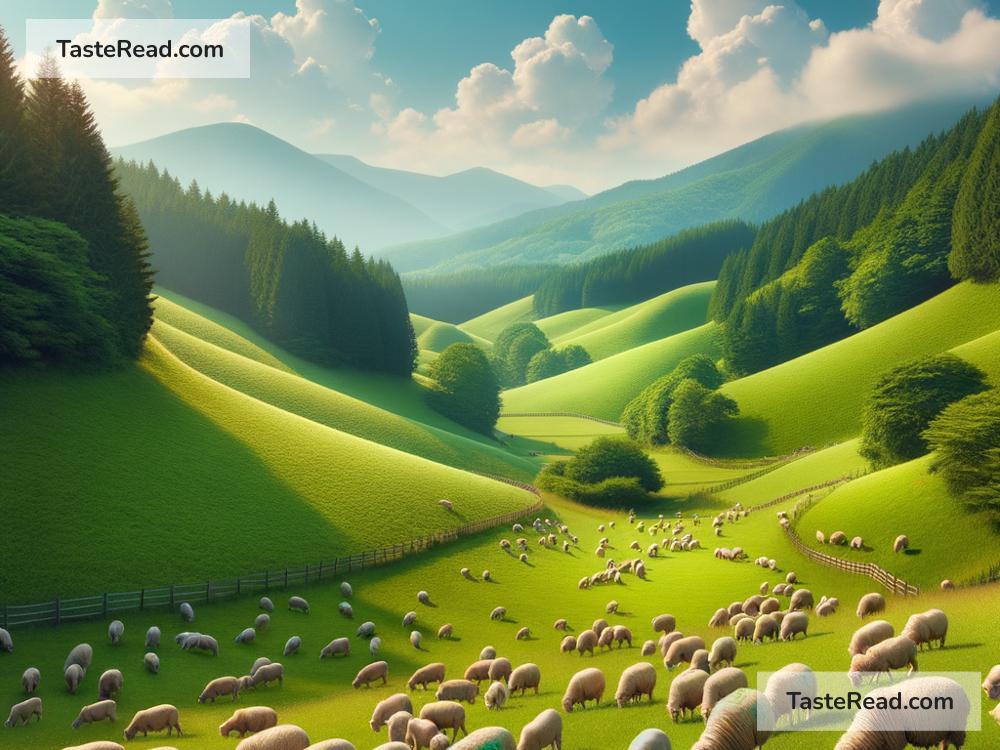Delving Into the Green Side of Grass-Fed Lamb
Have you ever stood in the meat section of your local grocery store, looking at the labels and wondering what they all really mean for the planet? Among the various labels and terms, you might have noticed that some lamb is specifically labeled as “grass-fed.” This isn’t just a fancy term to make the lamb sound more appealing; it actually carries significant environmental benefits. So, let’s take a leisurely stroll through the green fields of information and find out how choosing grass-fed lamb can be a win for both your dinner table and Mother Earth.
A Closer Look at Grass-Fed Lamb
First off, let’s clarify what grass-fed lamb truly means. Traditionally, lambs roam freely, grazing on a natural diet of grass, herbs, flowers, and other edible plants found in pastures. This is in contrast to conventionally raised lambs that might be fed a diet of grains and supplements to speed up their growth. Grass-fed lamb not only leads to a possible difference in flavor but also impacts the environment in several positive ways.
Less Chemistry on the Fields
One of the immediate benefits of raising lambs on a grass-fed diet is the reduced use of fertilizers and pesticides. Pasture-raised lambs essentially fertilize the land naturally as they graze, move, and live on the land. This natural cycle reduces the need for chemical interventions, leading to healthier soil and surrounding ecosystems.
Carbon Footprint Reduction
It turns out, grass-fed lambs can be somewhat of unexpected climate heroes. Pastures and grasslands have a fantastic ability to capture carbon dioxide (CO2) from the atmosphere and store it in the ground. This natural process, known as carbon sequestration, helps mitigate climate change by reducing the overall amount of greenhouse gases. When managed correctly, grazing lands used by grass-fed lambs can act as carbon sinks, capturing more CO2 than is emitted during farming, making this practice potentially carbon-neutral or even carbon-negative.
Biodiversity Boost
Unlike the more intensive farming practices that can lead to monocultures (where only one type of crop is grown), pasture lands for grass-fed lambs usually contain a variety of plants and habitats. This diversity creates a richer ecosystem, supporting not just the lambs but a whole host of wildlife, including birds, insects, and other animals. Healthier ecosystems are more resilient and beneficial for the environment as a whole.
Water-wise Farming
When you manage pastures well, they can become quite efficient in water use. The diverse plant life in pastures can help improve soil structure and health, increasing its ability to hold water. This not only makes the land more resilient to drought but also reduces the need for artificial irrigation, thereby conserving water. Plus, well-managed grazing can prevent soil erosion, keeping rivers and streams cleaner.
Encouraging Sustainable Practices
Choosing grass-fed lamb encourages farmers to adopt more sustainable farming practices. As consumer awareness and demand for environmentally friendly products grow, more farmers might be inclined to shift towards practices that are better for the planet. This, in turn, can help drive more widespread changes in agriculture, leaning towards sustainability and environmental stewardship.
The Whole Picture
It’s important to remember that the environmental impact of grass-fed lamb, like any food product, depends on various factors including the specific farming practices used, the local climate, and how the land is managed. Not all grass-fed systems are created equal, and some might offer more benefits than others. Encouraging transparency and supporting farmers who adopt truly sustainable practices are key to maximizing the environmental benefits.
Your Plate, Your Planet
Ultimately, the choices we make about what we put on our plates can have a ripple effect on the environment. Opting for grass-fed lamb is one way to support farming practices that are more in harmony with nature. By doing so, we’re not just indulging in a potentially tastier and healthier meal, but we’re also casting a vote for a greener, more sustainable future.
Next time you find yourself in the meat section, contemplating your options, remember that opting for grass-fed lamb could be a small step towards a healthier planet. It’s a choice that satisfies not just your taste buds but also your conscience, knowing that you’re contributing to positive environmental practices.


